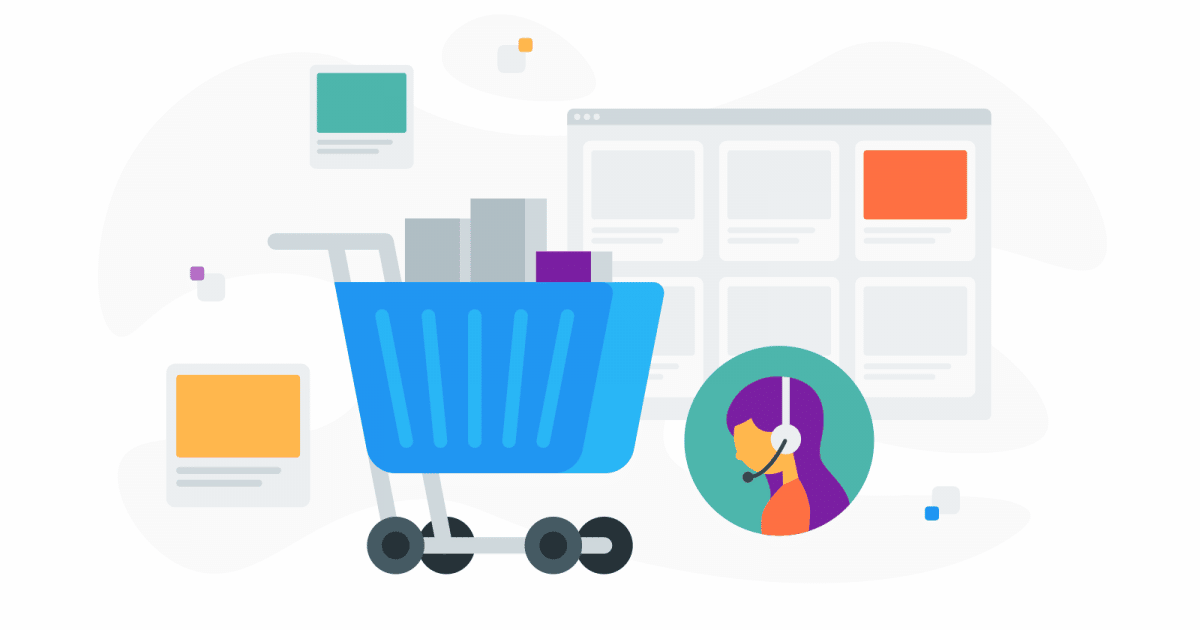
The lines between digital and physical retail are evaporating faster than venture capital at a failed startup showcase. In fact, over 73% of shoppers now use multiple channels before making a purchase decision¹.
Consumers casually browse products from bed at 2 AM, place orders while waiting for coffee, then swing by the store for instant pickup—all while expecting red carpet treatment at every touchpoint.
Meanwhile, that customer in Nebraska just ordered specialty tea directly from a boutique shop in Taiwan because, well, they can. Cross-border commerce has exploded as logistics networks and payment systems finally caught up with consumer curiosity.
Welcome to modern e-commerce—where convenience, global access, and algorithmic insight have fundamentally changed how we buy and sell. For businesses willing to adapt, the opportunities are extraordinary.
In this article, we’ll take a look at why e-commerce is important, the pros and cons of e-commerce, and tips for becoming a successful online retailer.
Key Takeaways:
- The most successful online retailers blend digital efficiency with human connection: While automation and AI drive operational efficiency, strategic human touchpoints during critical moments like complex purchases or support issues create the competitive advantage that builds customer loyalty.
- E-commerce eliminates physical boundaries and operational limitations: Businesses can reach global customers 24/7 with significantly lower overhead costs than traditional retail, creating unprecedented growth potential.
- Customer experience depends on seamless communication across channels: Integrating cloud-based call center solutions with e-commerce platforms ensures customers receive personalized support regardless of their location or time zone.
Ready to sell across borders without the hassle? Expand Your Global Reach
What is E-commerce?
E-commerce is the buying and selling of goods or services online—whether through a website, app, or marketplace. If it happens on the internet, it counts.
6 Benefits of E-commerce for Businesses
Look, managing an e-commerce operation at scale isn’t for the faint of heart. Between juggling inventory forecasts, optimizing conversion funnels, and keeping customer acquisition costs from eating your lunch, some days feel like digital warfare.
But when everything clicks? The growth potential makes traditional retail look like a school bake sale.
After seeing the tremendous growth of e-commerce over the past two decades, one truth stands out: a dropshipping business can completely shatter the ceiling on what ambitious entrepreneurs can achieve. Physical stores hit natural limits; e-commerce just keeps climbing.
1. Lower Costs and Higher Profit Margins
E-commerce eliminates the financial anchors that drag down traditional retail. Without astronomical rent payments, utility bills, or excessive staffing needs, overhead shrinks dramatically. This cost structure creates breathing room for businesses to reinvest in growth or simply enjoy healthier margins. It also makes branding far more accessible—without the need for expensive signage, packaging, or in-store displays, businesses can test and refine their identity online at a fraction of the cost. Additionally, implementing secure payment processes can help reduce chargebacks, protecting revenue and maintaining customer trust.
The direct-to-consumer model cuts out middlemen entirely. Each unnecessary link in the distribution chain represents margin compression. By selling straight to customers, brands capture the full value their products create.
Plus, smart automation tools have revolutionized operating costs for online retailers. AI-powered chatbots handle routine customer inquiries at a fraction of human support costs. Meanwhile, inventory management systems eliminate costly overstocking and stockouts through predictive algorithms.
All without forgetting about how self-service models empower customers to find answers without agent intervention. These technologies don’t just reduce expenses – they often deliver superior customer experiences through instant, 24/7 availability and consistency.
2. 24/7 Sales and Unlimited Business Potential
Perhaps the most powerful benefit of e-commerce lies in its perpetual availability. While brick-and-mortar managers fret over holiday schedules and staffing issues, online stores generate revenue around the clock without additional labor costs.
The shop continues selling whether you’re in back-to-back meetings, enjoying dinner, or sound asleep. This creates unprecedented efficiency in the sales model.
By the same token, e-commerce enables truly passive income streams through subscription models, automated fulfillment, and digital product delivery. These approaches minimize ongoing effort while maximizing recurring revenue.
Well-designed systems handle everything from payment processing to delivery logistics with minimal human intervention. This allows businesses to scale revenue without proportionally scaling staff costs.
3. Wider Customer Reach & Global Expansion
Traditional retail remains limited by foot traffic within driving distance. E-commerce demolishes these constraints entirely. Suddenly, potential customers exist everywhere with internet access.
Global expansion no longer requires risky real estate investments in untested markets. Instead, businesses can test demand through targeted digital marketing before committing significant resources —whether through social media ads, influencer collaborations, or even buying YouTube views to amplify product visibility.
Effective localization strategies unlock international markets through multi-currency payment options, translated content, and region-specific marketing approaches. These adaptations make customers feel understood regardless of location.
Modern e-commerce extends beyond standalone websites to create integrated selling ecosystems. Businesses capitalize on platform traffic through Amazon, Shopify Dropshipping and social commerce on Instagram and Facebook. To stay competitive, many are turning to automated dropshipping platforms that streamline sourcing, listing, and fulfillment across multiple sales channels.
This omnichannel approach meets customers wherever they spend time online, creating multiple revenue streams through various digital touchpoints.
Unlock revenue in international markets with 160+ local numbers.
4. Data-Driven Insights for Smarter Decision-Making
E-commerce generates customer insights impossible to capture in physical retail. AI analysis creates personalized experiences at scale, recommending products based on browsing history, purchase patterns, and demographic information.
These tailored experiences drive higher conversion rates and foster deeper customer loyalty. Personalization transforms generic shopping into curated discovery.
Unlike traditional retail with quarterly reviews, e-commerce provides real-time performance data. An e-commerce data API can further streamline this process, offering teams deeper insights and more precise control over their strategies in real time. Teams track customer behavior, test pricing strategies, and measure marketing effectiveness instantly.
This immediate feedback loop enables continuous optimization. Smart managers turn insights into action before problems escalate or opportunities vanish.
5. Accelerated Time to Market
Modern e-commerce platforms slash launch timelines dramatically. What once required months of setup can now go live within days.
This speed creates competitive advantages for businesses responding to market trends. This speed creates competitive advantages for businesses responding to market trends, with the eCommerce platform for SEO providing an added edge in visibility. Agile companies capitalize on opportunities before slower competitors mobilize.
6. Superior Customer Support Through Virtual Call Centers
E-commerce businesses leveraging cloud-based call center solutions gain significant advantages over traditional retail support models. With systems like CloudTalk, support teams connect with customers globally using local numbers from 160+ countries—building trust through familiar area codes despite vast physical distances.
Advanced call routing ensures customers connect with the most knowledgeable agent for their specific issue, while integration with e-commerce platforms provides agents with complete purchase histories and previous interactions. This context eliminates the frustrating “let me look that up” delays that plague typical support experiences.
Data shows the impact clearly. DiscoverCars tripled their call volume from 30,000 to 100,000 quarterly calls while maintaining service quality – growth impossible with traditional phone systems. Automated follow-ups through SMS and email create seamless post-call experiences that drive higher customer retention rates.
Transform your customer experience with 24/7 availability
Benefits of E-commerce to Consumers
While businesses reap substantial advantages from e-commerce, customers enjoy equally compelling benefits. The digital shopping revolution has fundamentally shifted consumer expectations and experiences in several key ways:
Shop Anywhere, Anytime
Nothing beats shopping in pajamas at midnight. E-commerce eliminates travel time, parking hassles, and checkout lines. Customers browse extensive inventories from anywhere with internet access, creating a convenience factor that’s now expected.
This accessibility extends to comparison shopping:
- Compare dozens of retailers simultaneously
- Shop during off-hours when physical stores are closed
- Save commuting time and transportation costs
- Browse at your own pace without sales pressure
Endless Aisles of Options
Online stores shatter the limitations of physical retail space, offering unprecedented product diversity that helps customers find exactly what they need.
E-commerce platforms expand consumer choices through:
- Niche products unavailable locally
- Extended size ranges
- International brands and specialty items
- Customizable products tailored to specific preferences- e.g., custom print on demand phone cases
Your Wallet Will Thank You
E-commerce creates natural price competition by making comparison shopping effortless. Digital storefronts also eliminate many costs associated with physical retail.
Smart shoppers enjoy financial advantages including:
- Lower baseline pricing due to reduced overhead
- Frequent digital promotions and flash sales
- Coupon aggregators and price-tracking tools
- Reduced impulse purchases through thoughtful browsing
“We Know What You Like”
Modern e-commerce sites use AI to learn customer preferences over time, creating shopping experiences that feel increasingly personal and intuitive.
Personalization creates stronger connections through:
- Tailored product recommendations
- Customized homepage displays
- Targeted email offers based on browsing history
- Saved preferences and purchase history
Research Like a Pro
E-commerce transforms casual shoppers into informed buyers by providing comprehensive product information impossible to match in physical stores.
Consumers make more confident purchases with access to:
- Comprehensive product specifications
- High-resolution photos and videos from multiple angles
- Customer reviews and ratings
- Expert guides and comparison tools
- Detailed sizing information
Delivery on Your Terms
The evolution of e-commerce logistics has created unprecedented flexibility that would have seemed impossible a decade ago.
Modern delivery options include:
- Same-day or next-day delivery for urgent needs
- Scheduled delivery windows for planning
- Multiple shipping speed options at different price points
- Buy online, pick up in-store for immediate gratification
- Locker pickup for privacy or convenience
- For promotions or pick-up instructions, your followers can simply scan the QR code, making the shopping experience even smoother.
Boost Customer Loyalty: Integrate your call center with your e-commerce platform
E-commerce Challenges
Every business faces trade-offs. While e-commerce delivers exceptional growth opportunities, ignoring its inherent challenges can derail even promising ventures. Smart operators acknowledge these hurdles and implement strategic solutions to minimize their impact.
The Dark Side of Digital Retail
E-commerce combines logistics complexity, technical vulnerabilities, human connection barriers, and intense competition into a perfect storm of operational challenges. Businesses that thrive online tackle these issues proactively rather than scrambling for solutions after problems emerge.
Shipping and Returns: The Logistics Labyrinth
Customers now expect Amazon-level shipping speeds regardless of your company’s size. This expectation creates immense pressure on logistics operations. Partnering with a trusted platform like WarehousingandFulfillment can help businesses meet these demands efficiently. Returns further complicate matters, with online return rates reaching 30% in categories like apparel – three times higher than brick-and-mortar levels.
Managing these logistics demands requires:
- Strategic warehouse positioning
- Multiple shipping carrier relationships
- Clear return policies with streamlined processes
- Inventory visibility across all channels
- Packaging optimization for shipping durability
Smart merchants view returns as customer retention opportunities rather than operational headaches. Every return represents a chance to exceed expectations and earn loyalty through seamless processes.
Security Vulnerabilities That Keep CTOs Awake
Technology dependence creates natural security exposure. The statistics paint a concerning picture: 91% of e-commerce businesses reported cyber incidents in 20221, contributing to $41 billion in global online payment fraud losses.
Beyond financial damage, security breaches destroy customer trust – perhaps your most valuable asset. Recovery requires significant time and resources that could otherwise fuel growth initiatives.
Protection strategies include:
- Regular security audits and penetration testing
- Compliance with payment security standards
- Employee security awareness training
- Cloud providers with robust data protection measures
- Incident response planning
CloudTalk’s security protocols maintain GDPR and HIPAA compliance, ensuring customer data remains protected during crucial sales and support interactions. This protection extends beyond websites to all customer touchpoints.
The Human Connection Gap
Digital convenience comes at the cost of personal interaction. Consider the camera enthusiast weighing a significant purchase decision. Online product specifications help, but questions about practical usage scenarios remain.
Chatbots first and call center agents later offer immediate responses but struggle with nuanced questions requiring context and expertise. This interaction gap frequently leads to abandoned carts when customers can’t get satisfactory answers.
Businesses bridging this gap implement:
- Live video product demonstrations
- Real-time expert chat support
- Detailed FAQ content addressing common concerns
- Phone support for complex purchases
- Post-purchase setup assistance
These human touchpoints create differentiation in increasingly commoditized markets.
Competition That Never Sleeps
Digital storefronts operate globally, creating unprecedented competition. Customers compare options worldwide in seconds, making differentiation increasingly challenging.
Standing out requires:
- Clear brand positioning that resonates emotionally
- Superior customer service experience metrics
- Specialized product expertise
- Data-driven marketing optimization
- Regular competitive analysis
Monitoring key performance metrics across sales and service channels provides crucial competitive intelligence. Tools measuring customer conversation quality, including optimal Talk/Listen ratios, help businesses fine-tune interactions for maximum impact.
Conclusion
Let’s be honest—if your business isn’t leveraging e-commerce advantages by now, you’re essentially competing with one hand tied behind your back. The digital revolution has permanently altered the playing field, and smart companies are capitalizing on the shift.
With an e-commerce business global customers can shop your store at 3 AM while you sleep. Data analytics reveal exactly what’s working (and what isn’t). And growth happens at speeds that make brick-and-mortar executives weep with envy.
Yes, e-commerce comes with its own challenges. Shipping logistics can be a nightmare. Security threats lurk everywhere. And sometimes customers just want to speak with an actual human who understands their problem—preferably without repeating their order number seventeen times.
But here’s the beautiful truth: these challenges have solutions. Cloud-based call systems with local numbers create instant rapport with international customers. Integrated CRMs give support agents complete context without awkward holds. And automation handles repetitive tasks while humans tackle what actually matters.
The question isn’t whether e-commerce works. It’s whether you’re brave enough to maximize its potential.
Scale Without Limits: Handle 3x more customer calls without adding staff
Source:

















